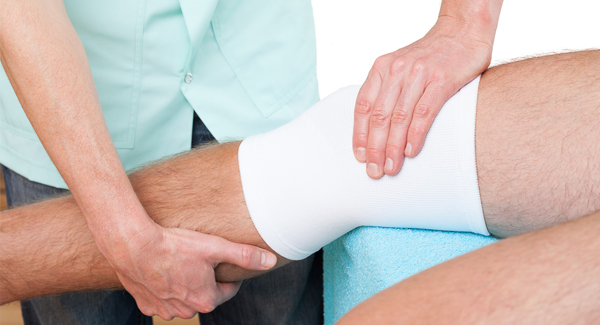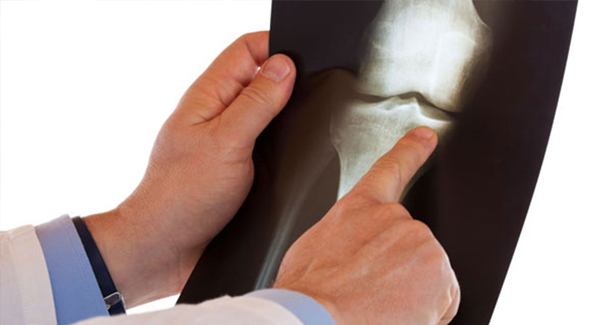Prepare for Going Home After Surgery
By Mary Anne Dunkin
Make a few practical post-surgery preparations before to going to the hospital. What to expect after you’re home.
It can be hard to think beyond hoping for a successful surgery outcome. But part of a winning recovery strategy is preparing for your return from the hospital before you even have surgery.
Much of your preparation will depend on your surgery, the type of arthritis you have, which joints are affected, other health problems and how much help you have at home. Taking the time well before your surgery to prepare for your discharge will do wonders to help ease your transition after you check out. The checklist below is a guideline to help you prepare for your homecoming and the weeks of recovery that follow.
Much of your preparation will depend on your surgery, the type of arthritis you have, which joints are affected, other health problems and how much help you have at home. Taking the time well before your surgery to prepare for your discharge will do wonders to help ease your transition after you check out. The checklist below is a guideline to help you prepare for your homecoming and the weeks of recovery that follow.
Before You Check In
1. Consult an expert
Many doctor’s offices or hospitals have discharge planners to help plan for your discharge day and beyond. “I follow patients from the minute the doctor decides they need a joint replacement,” says Rosemary Weser, a discharge planner at the Medical College of Georgia in Augusta. Weser helps patients get ready for surgery, schedules the surgery and meets with them for a pre-operation appointment, during which she helps them plan for their return home.
2. Prepare your home for your return
First, find out if a physical or occupational therapist can be scheduled to come out to your home to recommend modifications.
If your insurance won’t cover that service, here are some things you can do on your own at home:
If your insurance won’t cover that service, here are some things you can do on your own at home:
- Eliminate clutter - Clear the floors of throw rugs, electrical cords, kids’ toys, etc. Have furniture moved to make pathways wide enough for a walker.
- Elevate chairs and beds - If you’ve had hip replacement, you’ll have restrictions on how much you can bend your new joint until the tissues around it heal. If your bed is low, have someone place blocks under the legs to raise it.
- Make living convenient - Consider what you’ll need when you return home and place items where you can access them easily – pots, pans and dinner plates on the kitchen counter; the TV remote next to your cozy chair. Stock your pantry and freezer before you leave for the hospital. Prepare meals in advance and freeze them. If your mail is delivered to an outdoor mailbox, contact your post office to request delivery directly to your door.
- Set up sleeping arrangements - If your bedroom is on the second floor, set up a temporary one downstairs. If that’s not possible, limit your trips upstairs – once at bedtime, then back down in the morning.
- Get the bathroom ready - If you’re having hip replacement, an elevated toilet seat is a must. Place an adjustable commode over your regular toilet seat. Get a shower seat and hand-held showerhead for the shower.
3. Order assistive devices and other supplies
Although doctors recommend waiting until after your surgery to find out exactly what you’ll need, there are some devices you can count on needing. Be sure to ask your discharge planner what devices the hospital will provide for you to take home and what your insurance will cover.
Here are some devices experts recommend:
Here are some devices experts recommend:
- TED hose - These specialized, tight-fitting stockings prevent blood clots from forming in your legs after a joint replacement. You’ll need to put them on every morning when you get up and take them off each night before you go to bed. You can purchase them from medical supply stores.
- Ice packs - Ice packs will help ease pain and inflammation at the incision site. Put them in the freezer before you leave for the hospital. You can purchase ice packs, use bags of frozen peas or make an ice pack by freezing three parts water to one part rubbing alcohol in a freezer bag.
- Proper attire - You’ll want loose clothing that’s easy to get on and off. Some nice outfits instead of sweats may give you a mental boost.
- Chair on wheels - You won’t need a wheelchair, but you may benefit from an office chair with wheels that will make it easier to get around in the kitchen.
- Carry all - A walker basket can help you carry things when you need your hands for a walker. Or try an apron with large pockets, which will also work when you advance to a cane.
- Reachers and grabbers - Check your medical supply store for devices that can help you do daily tasks with minimal stretching and bending. You’ll need help reaching items on high shelves, picking things up off the floor, and pulling up socks.
4. Arrange for help
You may need help with meals, laundry, housework and shopping for several weeks. If you’re married, try to plan your surgery for when your spouse can stay home with you for a week or two. If you live alone, ask a friend or family member to stay with you for several days. At the least, have someone check on you a few times a day. If you don’t have friends or family nearby, see if your place of worship has a homebound ministry that can help, and check with your discharge planner and insurance company to see about getting in-home help.
5. Plan your transportation home
Ideally, a family member or friend will go with you and wait while you’re in surgery and can drive you home if you’re released the same day. If you are hospitalized for a few days after surgery, arrange in advance for someone to be available to drive you when you’re released.
Having the right ride is important. Most experts recommend a large sedan, SUV or minivan, especially for hip replacement patients, who will have restrictions on how they can move with their new joint. While some experts say it’s OK to stretch out on the back seat, particularly for a long car ride, sitting in the front seat with the seat back as far as it will go may be preferable.
If you don’t have someone to drive you home, some taxi services have handicapped accessible vehicles. Your discharge specialist can arrange your ride. In some states, Medicaid covers transportation home from the hospital.
Having the right ride is important. Most experts recommend a large sedan, SUV or minivan, especially for hip replacement patients, who will have restrictions on how they can move with their new joint. While some experts say it’s OK to stretch out on the back seat, particularly for a long car ride, sitting in the front seat with the seat back as far as it will go may be preferable.
If you don’t have someone to drive you home, some taxi services have handicapped accessible vehicles. Your discharge specialist can arrange your ride. In some states, Medicaid covers transportation home from the hospital.
Heading Home
Discharge Day
Your discharge specialist will go over instructions with you and provide you with a list to take home. Find out when this will occur and have a friend or family member there as an advocate. Keep the written instructions handy and make sure you get a list of phone numbers to call in case of emergency or if you have questions once you’re home.
What to Expect at Home
At times you may feel frustrated, discouraged, or even defeated. Recovery can be challenging – but these feelings will pass. You may have trouble doing everyday activities like navigating the stairs or standing long enough to prepare a meal. Because of inactivity and pain medication you may be constipated. You may have soreness that makes it difficult to do your exercises.
If you have concerns beyond these normal feelings, speak with your doctor or other health professional. Or touch base with others you know who have had the procedure; they probably had many of the same feelings and challenges.
Do little things to improve your mood, like getting dressed each day instead of hanging out in your pajamas, using downtime to call or write to friends, or watching comedies.
If you have concerns beyond these normal feelings, speak with your doctor or other health professional. Or touch base with others you know who have had the procedure; they probably had many of the same feelings and challenges.
Do little things to improve your mood, like getting dressed each day instead of hanging out in your pajamas, using downtime to call or write to friends, or watching comedies.
Stay in the Know. Live in the Yes.
Get involved with the arthritis community. Tell us a little about yourself and, based on your interests, you’ll receive emails packed with the latest information and resources to live your best life and connect with others.


